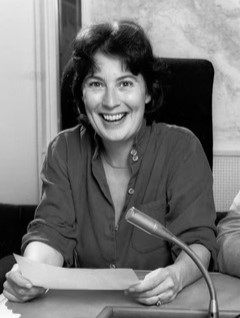Related Research Articles

The Global Television Network is a Canadian English-language terrestrial television network. It is currently Canada's second most-watched private terrestrial television network after CTV, and has fifteen owned-and-operated stations throughout the country. Global is owned by Corus Entertainment — the media holdings of JR Shaw and other members of his family.

CBC Television has aired National Hockey League (NHL) broadcasts under the Hockey Night in Canada brand that is primarily associated with its Saturday night NHL broadcasts throughout its history in various platforms. The brand is owned by the CBC and was exclusively used by CBC Sports through the end of the 2013–14 NHL season.

Foster William Hewitt, was a Canadian radio broadcaster most famous for his play-by-play calls for Hockey Night in Canada. He was the son of W. A. Hewitt, and the father of Bill Hewitt.

CKXT-DT was a broadcast television station based in Toronto, Ontario, Canada, which broadcast to much of southern and eastern Ontario. It was owned by Quebecor Media through its Groupe TVA unit. Although beginning as a general interest independent station carrying a typical schedule of entertainment and information programming, by the time of the station's closure on November 1, 2011, the station had been converted into an over-the-air simulcast of Quebecor's cable news channel, Sun News Network. The station transmitted on channel 52 in Toronto.

CHCH-DT is an independent television station in Hamilton, Ontario, Canada. Owned by Channel Zero, the station maintains studios on Innovation Drive in the west end of Hamilton; prior to 2021, it was located near the corner of Jackson and Caroline streets in downtown Hamilton for nearly 65 years. The station has additional offices at the Marriott on the Falls in Niagara Falls, Ontario. Its old transmitter was located on First Road West in the former city of Stoney Creek; it was demolished in March 2024 and replaced with a new transmitter located on Highway 5 near Millgrove Side Road in Dundas, Ontario, which started transmitting in November 2023.

CFRB is a commercial radio station in Toronto, Ontario, Canada. It is owned by Bell Media and carries a News/Talk radio format. Its studios and offices are in the Entertainment District at 250 Richmond Street West.

CIII-DT is a television station in Toronto, Ontario, Canada, serving as the flagship station of the Global Television Network. Owned and operated by network parent Corus Entertainment, CIII-DT maintains studios at 81 Barber Greene Road in the Don Mills district of Toronto, and its transmitter is located atop the CN Tower in downtown Toronto.
CKO was a Canadian radio news network which operated from 1977 to 1989. The CKO call sign was shared by twelve network-owned stations, as listed below.

CHUM is a Canadian AM radio station in Toronto, Ontario. The station is owned and operated by Bell Media. CHUM's studios are co-located with TSN at 9 Channel Nine Court in the Agincourt neighbourhood of Scarborough, with its transmitter array located in the Clarkson neighbourhood of Mississauga. TSN 1050 is simulcast on Bell Satellite TV channel 989, and on Shaw Direct channel 867. The station is also carried on the 3rd HD digital subchannel of CKFM-FM.
Party Game was a Canadian television game show in the 1970s, produced by Hamilton independent station CHCH-TV from 1970 to 1981. It aired throughout Canada in syndication, broadcast on 32 stations at its peak.
Kate Aitken was a Canadian radio and television broadcaster in the 1930s, 1940s and 1950s. Sometimes known by the nickname Mrs. A, she was one of the most famous female broadcasters of her era. In addition, she was known as an expert on cooking; she gave many public talks and demonstrations, and her advice was relied upon by millions of homemakers.

Elizabeth Gray was a Canadian journalist and radio broadcaster who through much of her career worked as a host and documentary producer for CBC Radio.
Sue Prestedge is a Canadian sports broadcaster who was one of Canada's first and most influential female sports journalists.
CFCA was the first regularly broadcasting licensed radio station in Toronto and was one of the first in Canada. Owned by the Toronto Daily Star it is notable for hosting the first live play-by-play ice hockey broadcast on February 8, 1923. The station went on the air in June 1922 and closed permanently in 1933.
CHML was a commercial radio station in Hamilton, Ontario, Canada, owned by Corus Entertainment. The station's long-time slogan was "Hometown Radio". It went off the air on August 14, 2024 at 1 p.m., shortly after Corus announced that the station would be closing.

Rosalie Trombley was a Canadian music director of Windsor, Ontario AM Top 40 radio station CKLW, also known as "The Big 8". She was known for her ability to select songs that would later become big hits. At the time, she was one of the few female music directors in AM Top 40; CKLW's listenership reached across the Detroit–Windsor transborder region, and Kal Rudman, editor of the music trade publication Friday Morning Quarterback, described Trombley as "the number one music director in the United States."
John Gilbert was a Canadian radio broadcaster.
Al Bruner (1923–1987) was a Canadian television broadcaster, most noted as the co-founder of the Global Television Network.
Kenneth David Soble was a Canadian broadcasting executive, who became the owner of radio station CHML and was one of the founders of CHCH-TV, both of which were in Hamilton, Ontario. Under his management, CHCH withdrew from the CBC Television Network in 1961 to become Canada's first independent television station. He was also the original applicant for what would eventually become Canada's Global Television Network, although the application underwent numerous changes before being transferred to a separate company, unrelated to Soble's Niagara Television, in 1970. One indication of the esteem in which he was held was that the Canadian Broadcasting Corporation offered him the job of president of the network in late 1966; but he decided to turn it down.
Tiny Talent Time is a Canadian children's television series, which has aired in various formats on CHCH-TV in Hamilton, Ontario, and in other markets via syndication, since 1957. A variety show, the series features children, aged 12 or under, demonstrating their talents in various performing arts.
References
- ↑ "Archives Canada". archivescanada.ca. Archived from the original on 2009-03-18.
- 1 2 Jane Gray at the Canadian Communications Foundation.
- 1 2 "Jane Gray." Canadian Radio Year Book, 1946 edition, p. 61
- 1 2 3 4 5 Nicolaas van Rijn. "Jane Gray was Voice of 'Serendipity Jane' in Southern Ontario." Toronto Star, March 22, 1984, p. A22.
- 1 2 3 Gary Lautens. "A Grande Dame Without Sophistication." Toronto Star, November 21, 1963, p. 31.
- ↑ Gerry Barker. "In Town and Out." Toronto Star, October 31, 1963, p. 31.
- ↑ Eva-Lis Wuorio. "Jane Gray: Radio's First Lady." Maclean's magazine, April 1, 1951, p. 10
- 1 2 "Broadcaster Had Fifty-Five Year Career." Toronto Globe & Mail, March 22, 1984, p. E3.
- 1 2 3 Eva-Lis Wuorio. "Jane Gray: Radio's First Lady." Maclean's magazine, April 1, 1951, p. 47.
- 1 2 Arnold Burner. "Ken Soble-- Good Guy? Bad Guy?" Toronto Star, August 29, 1964, p. 8.
- ↑ Jane Gray. "The Home Forum: Fan Mail." Toronto Globe & Mail, October 29, 1937, p. 11.
- 1 2 Advertisement for Jane Grey's radio show. Toronto Globe & Mail, May 27, 1937, p. 26.
- ↑ Gary Lautens. "A Grande Dame Without Sophistication." Toronto Star, November 21, 1963, p. 31.
- ↑ "Woman Contends Hobby Keeps People Young and Happy." Ottawa Journal, July 13, 1949, p. 2.
- ↑ Mona Purser. "Hobby Show is Treasury of Unique Craft Work." Toronto Globe & Mail, July 15, 1949, p. 11.
- ↑ Jim Bawden. "Fit and 40: CHCH Was Built on One Man's Dream." Toronto Star, August 13, 1994, p. SW4.
- ↑ Lotta Dempsey. "TV's Top Pinch-Hitter Has Never Struck Out." Toronto Star, October 9, 1968, p. 73.
- 1 2 Carla Mastromattei. "Pioneer Broadcaster, Spunky, Generous, Jane Gray Dead at 88." Hamilton (ON) Spectator, March 22, 1984, p. A7.